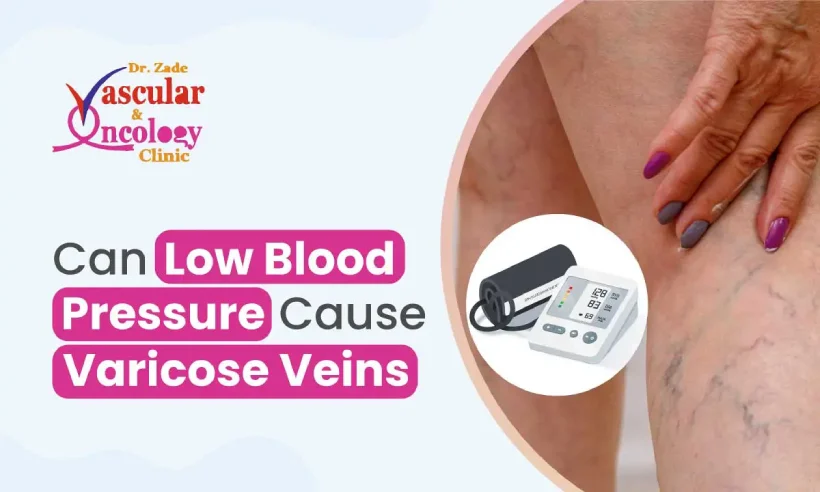Varicose veins and low blood pressure are both prevalent health concerns that affect numerous individuals worldwide. A common question that arises is whether there is a link between these two conditions.
In this article, we will delve deeper into the relationship between low blood pressure and varicose veins, offering a comprehensive understanding of their potential correlation and how to manage them effectively.
Decoding Varicose Veins
Varicose veins are enlarged, twisted veins that appear just beneath the skin’s surface. They typically develop in the legs but can occur in other areas of the body as well. These swollen veins are often blue or dark purple and may appear lumpy or bulging.
Common symptoms associated with varicose veins include aching pain, heaviness, swelling, and discomfort in the affected area, along with itching and restless legs in some cases.
Causes and Risk Factors of Varicose Veins
The primary cause of varicose veins is the weakening or dysfunction of the valves within the veins. These valves ensure that blood flows in one direction—toward the heart.
When these valves fail to function correctly, blood can pool in the veins, causing them to enlarge and twist. Several factors contribute to the development of varicose veins, including age, genetics, hormonal changes, obesity, and lifestyle choices such as prolonged sitting or standing.
The specific query regarding low blood pressure’s potential role will be addressed in the subsequent sections.
Demystifying Low Blood Pressure
Low blood pressure, medically termed hypotension, refers to a state where the blood pressure in the arteries falls below the normal range. Consequently, this insufficient pressure may result in inadequate blood flow to organs and tissues.
Symptoms of low blood pressure can vary, with some individuals experiencing dizziness, lightheadedness, fainting, fatigue, nausea, blurred vision, and cold, clammy skin.
Low blood pressure can arise from various factors such as certain medical conditions (e.g., heart problems, endocrine disorders, severe infections), medications (e.g., diuretics, beta-blockers, antidepressants), dehydration, and sudden changes in body position (e.g., standing up too quickly).
Examining the Relationship
Although research specifically investigating the relationship between low blood pressure and varicose veins is limited, some studies suggest a possible connection.
For instance, low blood pressure may contribute to the development or aggravation of varicose veins by impairing proper blood flow, particularly in the legs.
Understanding the Mechanism
One potential mechanism linking low blood pressure to varicose veins is that insufficient blood flow in the legs could cause blood to accumulate, leading to swollen and twisted veins.
However, this hypothesis requires further investigation and validation through additional research.
Anecdotal evidence from medical professionals and patients indicates that some individuals with low blood pressure may experience increased symptoms of varicose veins.
However, it is essential to note that this observation does not necessarily imply a direct causal relationship between the two conditions.
Other Influential Factors on Varicose Veins
Apart from low blood pressure, well-established risk factors for varicose veins include obesity, pregnancy, and prolonged sitting or standing. These factors exert additional pressure on the veins, increasing the likelihood of developing varicose veins.
The Significance of Circulation and Blood Flow
Maintaining healthy blood flow and proper circulation is crucial in preventing varicose veins. Adopting a heart-healthy lifestyle through regular exercise, a balanced diet, and effective stress management can contribute to overall vein health and reduce the risk of varicose veins.
Managing Varicose Veins and Low Blood Pressure
Effective treatments for varicose veins encompass lifestyle changes (such as elevating the legs when resting and avoiding prolonged sitting or standing), wearing compression stockings to improve blood flow, and seeking medical procedures like sclerotherapy, endovenous laser treatment, or surgery in more severe cases.
Tackling Low Blood Pressure
To manage low blood pressure, consider implementing dietary changes (such as increasing salt intake under a doctor’s guidance), staying hydrated, engaging in regular exercise, and taking medications as prescribed by a healthcare professional.
Conclusion
While low blood pressure is not a primary cause of varicose veins, it may contribute to their development in some individuals. The relationship between these two conditions is complex and warrants further exploration.
If you have concerns about your blood pressure or the presence of varicose veins, consult a qualified physician for personalized advice and appropriate treatment options. Remember, taking a proactive approach to your health can significantly impact your overall well-being and quality of life.
if you have intense pain, swelling, fever, or a sore on your leg, book an appointment today with best vascular surgeon in pune Dr. Kaurabhi Zade.

